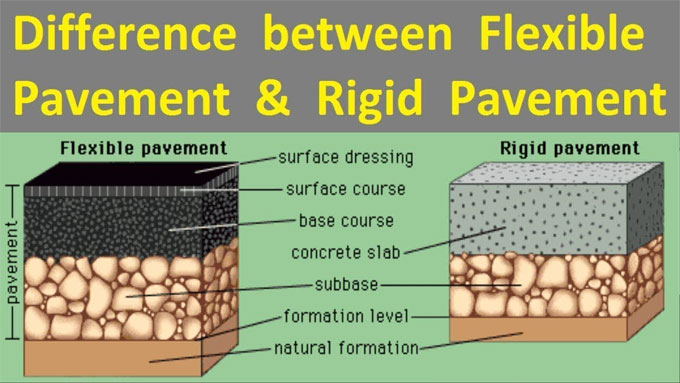
Difference Between Flexible Pavement and Rigid Pavement

The pavement designing is complicated task in Transportation Engineering. The most recognized methods for pavement design are Rigid pavement and Flexible pavement. The pavement surface has good longevity and it can resist the load operating from the wheel tyres.
Given below, the functional requirement of highway pavements :-
1. Flexible pavement and Rigid pavement contain superior riding quality
2. It should be less slippery
3. It should be rigid
4. It should contain adequate friction keeping the power of the vehicle unchanged.
Variation among Rigid Pavement and Flexible Pavement
1. Flexible Pavement
a. Load is transmitted from grain to grain to the lower layers
b. The design is totally based on the subgrade strength.
c. IRC 37-2012 code is applied for making the design of flexible pavement
d. The strength of flexible pavement is influenced by the aggregate interlock, particle friction and cohesion.
e. Flexible pavement demonstrates the deflection of subgrade at the surface of the pavement.
f. Design life lasts for 15 years.
Rigid Pavement:
1. Rigid pavement contains a strong flexural strength that is considered as the vital factor of design.
2. Rigid pavement contains a concrete layer at the top, the base course and soil subgrade remain underneath.
3. Rigid pavement disperses the load over a broad area due to its high flexural strength.
4. Load is transmitted through slab action.
5. The total thickness of the pavement remains under flexible pavement.
6. IRC: 58-2011 is utilized for making the designing of Rigid pavement.
7. Design life extends for 30 years


